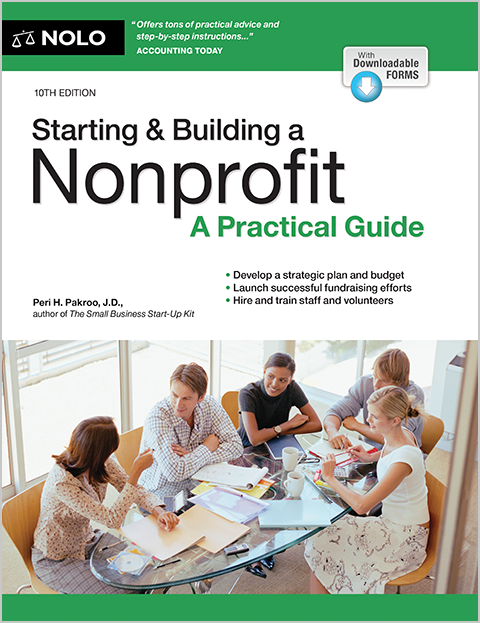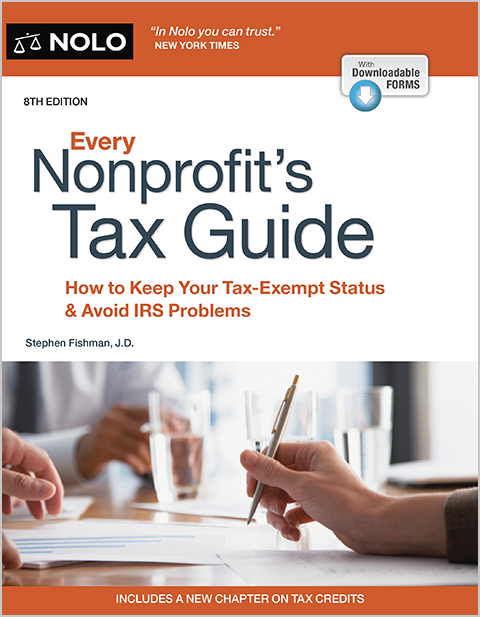Learn what nonprofit actions need board approval, and how to get and document that approval.
A nonprofit corporation must get board approval -- and sometimes member approval as well -- before taking important actions or making key decisions. But board approval is not needed for all nonprofit actions and decisions, especially those that involve day-to-day operational procedures.
In order to comply with the law and maintain your nonprofit's integrity, learn when you need board or membership approval, how to get it, and how to document that approval.
When Board Approval Is Required
Your board of directors is the primary decision-maker for your nonprofit and is responsible for overseeing its management. As a result, your board should approve any decision involving significant financial, legal, or tax issues, or any major program-related matter.
Some of the most common legal and business matters that require nonprofit board approval are:
- hiring and firing officers, managers, and key employees, such as the executive director
- setting salaries and benefits for officers, managers, and key employees
- purchasing commercial or director and officer liability insurance (which offers indemnification for directors and officers)
- leasing, purchasing, or selling real estate; real estate construction
- consenting to the terms of loans and other obligations the nonprofit takes on
- amending the articles of incorporation or bylaws, and
- issuing classes of memberships, and setting membership dues or special membership assessments.
In addition to these legal and business matters, the board is responsible for overseeing the organization's fundraising program, its grant outreach efforts, financial accountability practices and procedures, and financial audits.
Not every decision, however, requires formal action or approval by the board. Day-to-day operational matters, such as administrative staff procedures, are usually handled by staff without board involvement. For example, the board may approve the fundraising goals for the year, but the staff can be in charge of the fundraising events.
When Membership Approval Is Required
In a formal membership nonprofit, the members are responsible for electing the board of directors. This is usually done at an annual members' meeting. Other than that, members are generally less involved in organizational decisions than the board.
Bylaws or state laws usually specify the decisions that members have a right to vote on. You don't always have to ask members to independently consider and approve a matter. In some cases, they are simply asked to ratify a board decision.
The types of decisions that members might have the right to approve or ratify usually relate to structural changes to the nonprofit corporation, or changes to members' rights or responsibilities, including:
- electing the board of directors
- ratifying amendments to articles
- approving changes in the rights, privileges, or preferences of members
- approving the sale of substantial corporate assets, and
- agreeing to dissolve the corporation.
How to Get Board or Member Approval
There are two different ways for a nonprofit corporation to take action and make decisions. You can hold a meeting of your directors or members and vote, or your directors or members can sign written consents without attending a meeting.
Both methods have the same legal result -- the decision of the board of members is binding and final as long as it was properly done. However, there are situations where it can make more sense to use one method or the other.
Board and Member Meetings
A real meeting allows the board or members to engage in face-to-face discussion and arrive at decisions after debate, argument, or conversation. Most nonprofits favor this method because defining and implementing a nonprofit's program works best through open discussion and consensus-building among the interested parties.
Also, if an issue is significant enough to require board input or approval, it's usually also important enough to warrant an in-person meeting. Because of this, many nonprofits make most or all of their decisions at a meeting.
If you can't get everyone together at the same physical location for a meeting, some or all of your meeting participants can communicate and be "present" electronically instead of in person. As long as all of the meeting participants can hear one another simultaneously, most state laws allow this type of meeting and anyone participating electronically counts as present for quorum purposes.
The Written Consent Procedure
The written consent procedure is the quickest way to approve and document a formal decision by the nonprofit's board or members. You avoid having to call, give notice of, and hold a meeting. And no one has to prepare minutes of the meeting. Instead, you circulate a written resolution that states the action or business under consideration among the board or members, and those who approve the resolution sign the form.
Written consents work best to handle non-controversial or routine items of business, such as the approval of a bank authorization form or the extension of a lease. They are also useful if something is needed in a hurry and there's no time to hold a meeting.
Documenting Board or Member Actions
If your board takes action during a meeting, the secretary prepares written minutes (during or after the meeting) that show the date, time, place, and purpose for the meeting and the decisions (resolutions) approved by the board of directors or members.
If your board takes action by written consent, the written consent itself serves as documentation of the action. It should be kept in the corporate records book.
To learn more about when and how boards and members take action, and how to record those actions so as to avoid trouble, get Nonprofit Meetings, Minutes & Records, by Anthony Mancuso (Nolo).



